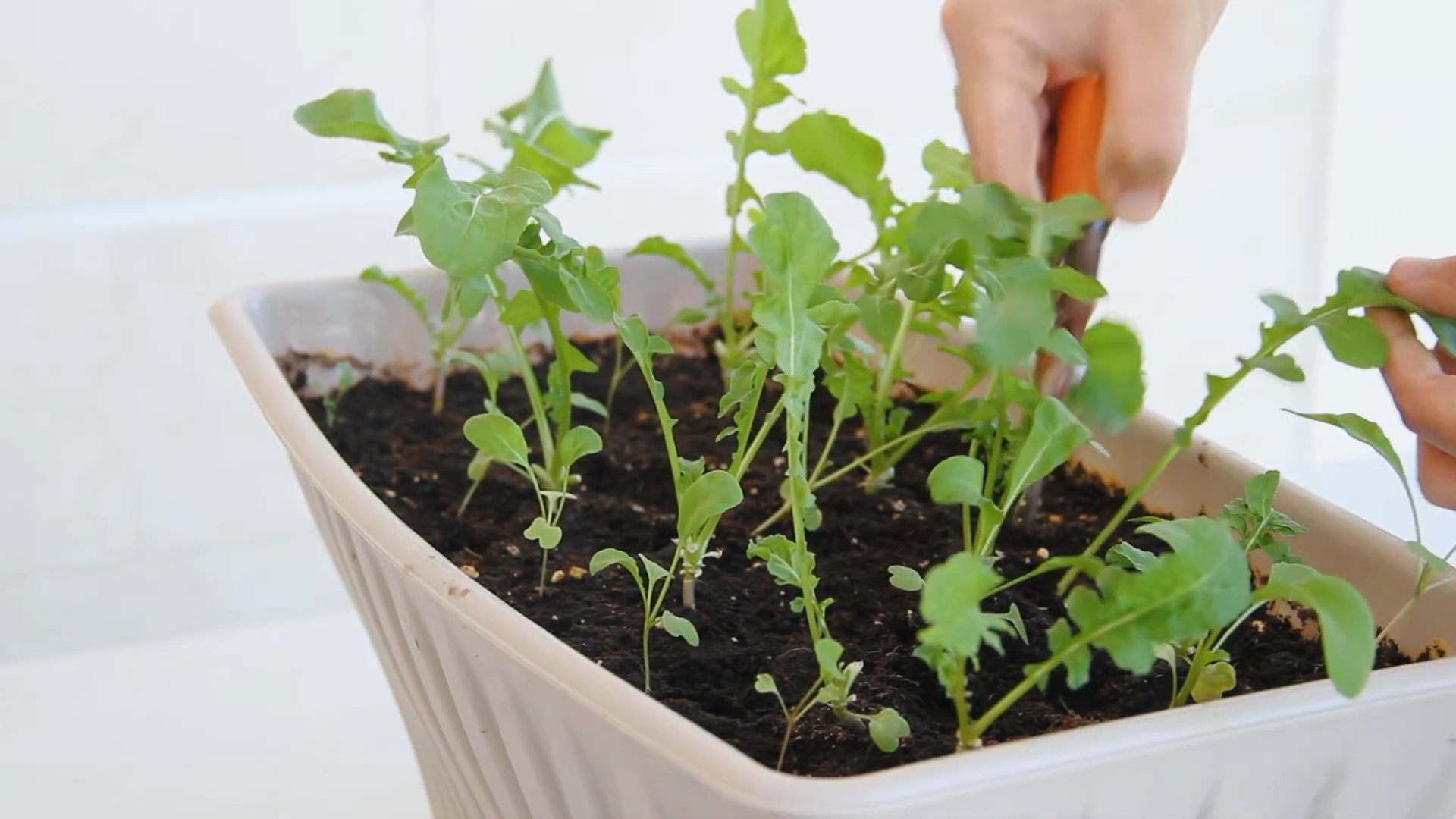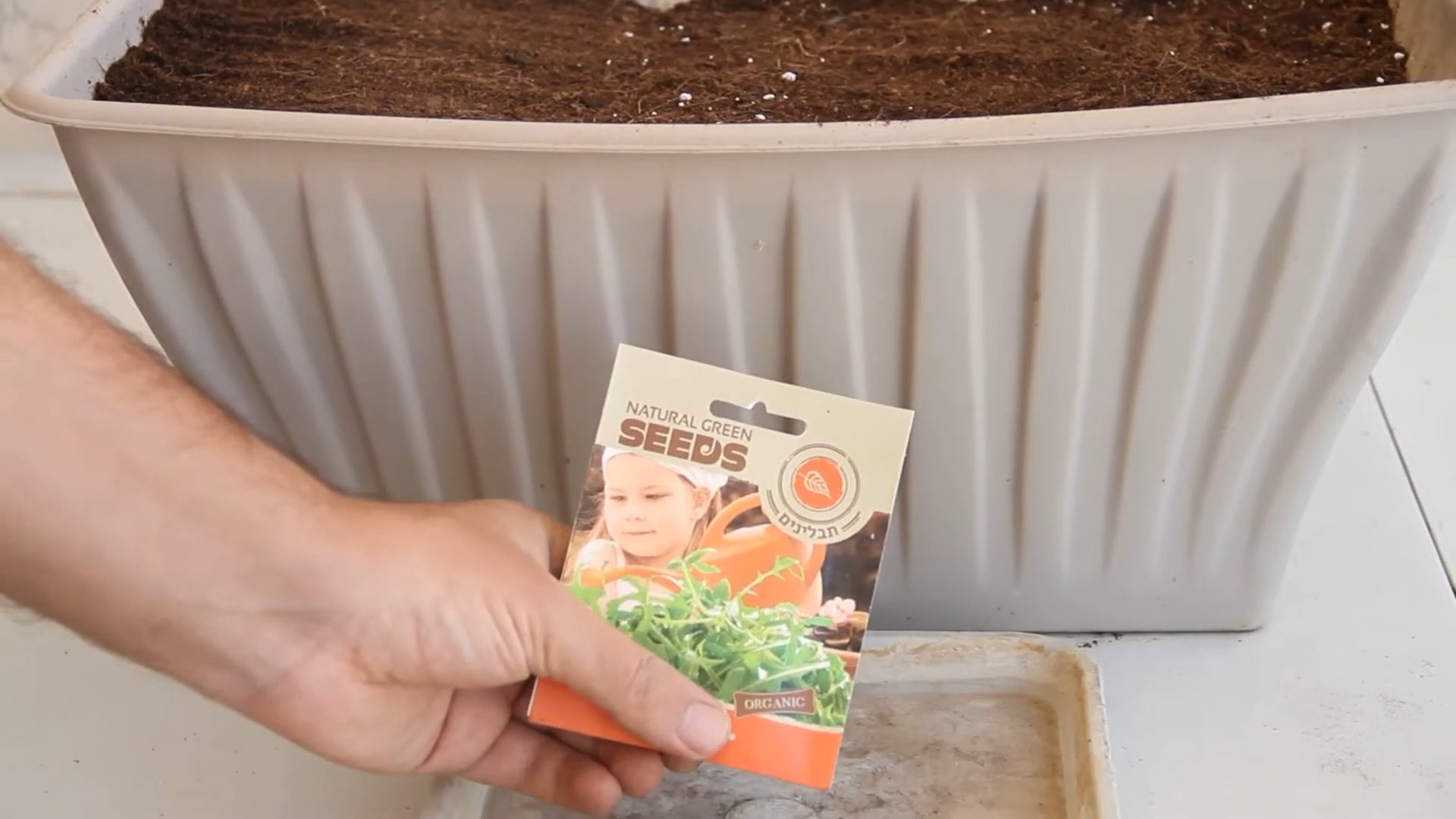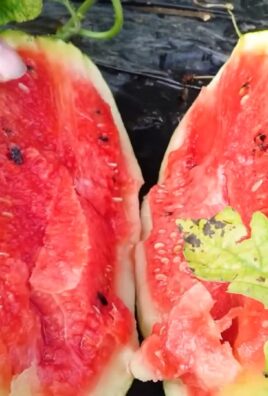Grow Arugula Indoors? Absolutely! Imagine fresh, peppery arugula gracing your salads and sandwiches, even when the snow is falling outside. No more sad, wilted greens from the grocery store – just vibrant, flavorful arugula harvested right from your windowsill. For centuries, cultivating herbs and vegetables indoors has been a way for people to connect with nature and ensure a supply of fresh produce, regardless of the season. Think of the ancient Romans with their rooftop gardens, or the medieval monks tending to their medicinal herbs within monastery walls.
But why should you bother learning to grow arugula indoors? Well, for starters, it’s incredibly rewarding! There’s something deeply satisfying about nurturing a plant from seed to harvest. Plus, it’s a fantastic way to save money on groceries and reduce your carbon footprint. Let’s be honest, store-bought arugula can be expensive and often lacks that intense, fresh flavor. And with concerns about pesticides and long-distance transportation, growing your own is a healthier and more sustainable option.
In this article, I’m going to share my favorite DIY tricks and hacks for successfully growing arugula indoors. Whether you’re a seasoned gardener or a complete beginner, I’ll guide you through every step of the process, from choosing the right container to harvesting your delicious, homegrown arugula. Get ready to unleash your inner gardener and enjoy the taste of fresh, peppery greens all year round!

Grow Your Own Arugula Indoors: A Spicy Salad Adventure!
Hey there, fellow plant enthusiasts! Are you craving that peppery, zesty bite of fresh arugula but don’t have a garden or the weather isn’t cooperating? No problem! I’m going to walk you through how to grow your own delicious arugula indoors, right on your windowsill or under grow lights. It’s easier than you think, and the satisfaction of harvesting your own greens is totally worth it.
What You’ll Need: The Arugula Arsenal
Before we dive in, let’s gather our supplies. Here’s what you’ll need to become an indoor arugula farmer:
* **Arugula Seeds:** Obviously! You can find these at most garden centers or online. Look for varieties specifically suited for container gardening if possible, but honestly, most arugula seeds will do just fine.
* **Containers:** You’ll need pots or containers with drainage holes. I recommend something at least 6 inches deep to give the roots room to grow. You can use plastic pots, terracotta pots, or even repurposed containers like yogurt tubs (just make sure to poke holes in the bottom!).
* **Potting Mix:** Don’t use garden soil! It’s too heavy and doesn’t drain well in containers. Opt for a good-quality potting mix specifically designed for container gardening. This will provide the right nutrients and drainage for your arugula.
* **Watering Can or Spray Bottle:** For gentle watering. Arugula likes consistent moisture, but not soggy soil.
* **Light Source:** Arugula needs plenty of light to thrive. A sunny windowsill that gets at least 6 hours of direct sunlight is ideal. If you don’t have a sunny window, you can use a grow light.
* **Optional: Seed Starting Tray:** If you want to get a head start, you can start your seeds in a seed starting tray before transplanting them to larger containers.
* **Optional: Liquid Fertilizer:** Arugula isn’t a heavy feeder, but a little boost of liquid fertilizer can help it grow faster and produce more leaves.
Getting Started: Sowing the Seeds of Success
Now that we have our supplies, let’s get planting!
1. **Prepare Your Containers:** Fill your containers with potting mix, leaving about an inch of space at the top. Gently pat down the soil to remove any air pockets.
2. **Sow the Seeds:** Sprinkle the arugula seeds evenly over the surface of the soil. You don’t need to bury them too deep; just lightly press them into the soil. Arugula seeds are small, so don’t worry about spacing them perfectly.
3. **Cover the Seeds:** Sprinkle a thin layer of potting mix over the seeds, just enough to cover them.
4. **Water Gently:** Use a watering can or spray bottle to gently water the soil. You want to moisten the soil without disturbing the seeds.
5. **Provide Light:** Place your containers in a sunny windowsill or under a grow light. If using a grow light, position it about 6-12 inches above the soil surface.
6. **Maintain Moisture:** Keep the soil consistently moist, but not soggy. Check the soil moisture daily and water when the top inch of soil feels dry to the touch.
Nurturing Your Arugula: The Growing Phase
Once your arugula seeds have germinated (usually within a week), it’s time to focus on nurturing your little plants.
1. **Thin Seedlings (Optional):** If your seedlings are growing too close together, you can thin them out to give them more room to grow. Use small scissors to snip off the weaker seedlings, leaving about an inch of space between the remaining plants. This step is optional, but it can help your arugula grow larger and healthier.
2. **Water Regularly:** Continue to water your arugula regularly, keeping the soil consistently moist. Avoid overwatering, as this can lead to root rot.
3. **Provide Adequate Light:** Make sure your arugula is getting enough light. If you’re using a windowsill, rotate the containers regularly to ensure that all sides of the plants are getting sunlight. If you’re using a grow light, keep it on for about 12-14 hours per day.
4. **Fertilize (Optional):** If you want to give your arugula a boost, you can fertilize it with a liquid fertilizer diluted to half strength. Apply the fertilizer every 2-3 weeks. I like to use a balanced fertilizer or one specifically formulated for leafy greens.
5. **Monitor for Pests:** Keep an eye out for pests like aphids or spider mites. If you notice any pests, you can try spraying them with insecticidal soap or neem oil. I prefer to use organic solutions whenever possible.
Harvest Time: Enjoying Your Spicy Bounty
The best part of growing your own arugula is, of course, harvesting and eating it!
1. **Harvest When Ready:** You can start harvesting your arugula when the leaves are about 2-3 inches long. This usually takes about 3-4 weeks after planting.
2. **Harvesting Technique:** Use scissors or your fingers to snip off the outer leaves, leaving the inner leaves to continue growing. This is called “cut and come again” harvesting, and it allows you to harvest your arugula multiple times.
3. **Wash and Enjoy:** Wash your harvested arugula leaves thoroughly before eating. You can use them in salads, sandwiches, pesto, or as a topping for pizza or pasta.
4. **Successive Planting:** To ensure a continuous supply of arugula, you can sow new seeds every 2-3 weeks. This is called successive planting, and it’s a great way to keep your salad bowl full of fresh greens.
Troubleshooting: Common Arugula Issues and Solutions
Even with the best care, you might encounter some challenges while growing arugula indoors. Here are some common issues and how to address them:
* **Leggy Growth:** If your arugula plants are tall and spindly with long stems, they’re probably not getting enough light. Move them to a sunnier location or provide supplemental light with a grow light.
* **Yellowing Leaves:** Yellowing leaves can be a sign of overwatering, underwatering, or nutrient deficiency. Check the soil moisture and adjust your watering accordingly. If you suspect a nutrient deficiency, try fertilizing with a balanced liquid fertilizer.
* **Slow Growth:** Slow growth can be caused by a variety of factors, including insufficient light, poor soil, or cold temperatures. Make sure your arugula is getting enough light and that the soil is well-draining. If the temperature is too cold, try moving your plants to a warmer location.
* **Pests:** As mentioned earlier, aphids and spider mites are common pests that can attack arugula. Spray them with insecticidal soap or neem oil to get rid of them.
Extra Tips for Arugula Success
Here are a few extra tips to help you grow the best arugula possible:
* Choose the Right Variety: Some arugula varieties are better suited for indoor growing than others. Look for varieties that are compact and quick-growing.
* Use a Self-Watering Container: If you tend to forget to water your plants, a self-watering container can be a lifesaver. These containers have a reservoir that holds water and slowly releases it to the soil, keeping your arugula consistently moist.
* Keep it Cool: Arugula prefers cooler temperatures, so try to keep your growing area between 60-70°F (15-21°C).
* Don’t Overcrowd: Give your arugula plants enough space to grow. Overcrowding can lead to poor air circulation and increased risk of disease.
* Experiment: Don’t be afraid to experiment with different growing techniques and varieties to find what works best for you.
Growing arugula indoors is a fun and rewarding experience. With a little bit of care and attention, you can enjoy fresh, spicy greens all year round. So, grab some seeds, get planting, and get ready to enjoy the delicious taste of homegrown arugula! Happy gardening!

Conclusion
So, there you have it! Growing arugula indoors is not only achievable, but it’s also a remarkably rewarding experience. Forget those wilted, overpriced greens from the grocery store. Imagine stepping into your kitchen and harvesting a handful of peppery, fresh arugula whenever you need it. The vibrant flavor and crisp texture will elevate your salads, pizzas, and sandwiches to a whole new level.
This DIY trick is a must-try for several compelling reasons. First and foremost, it provides you with a consistent supply of fresh, organic arugula, regardless of the season. No more relying on unpredictable weather or long trips to the farmers market. You’re in complete control of your arugula production, ensuring the highest quality and flavor. Secondly, it’s incredibly cost-effective. A single packet of arugula seeds can yield multiple harvests, saving you money in the long run. Finally, it’s a fantastic way to connect with nature and experience the satisfaction of growing your own food, even in a limited space.
But the beauty of growing arugula indoors lies in its versatility. Feel free to experiment with different varieties of arugula to discover your favorite flavor profiles. Try ‘Rocket’ for a classic peppery bite, or ‘Sylvetta’ for a milder, more delicate taste. You can also adjust the growing conditions to influence the flavor. For example, providing slightly less light can result in a milder, sweeter arugula.
Consider using different containers to suit your space and aesthetic preferences. Recycled containers, terracotta pots, or even repurposed jars can all work beautifully. Just make sure they have adequate drainage. You can also explore different growing mediums, such as coco coir or a soilless mix, to optimize drainage and aeration.
Don’t be afraid to get creative with your indoor arugula garden. You can even incorporate companion plants, such as basil or chives, to enhance the flavor and deter pests. The possibilities are endless!
We wholeheartedly encourage you to embark on this exciting journey of growing arugula indoors. It’s a simple, satisfying, and sustainable way to enjoy fresh, flavorful greens year-round. And most importantly, we want to hear about your experiences! Share your tips, tricks, and photos with us in the comments below. Let’s create a community of indoor arugula enthusiasts and inspire others to embrace the joy of homegrown goodness. What are you waiting for? Grab some seeds, a pot, and some soil, and start growing your own delicious arugula today! You’ll be amazed at how easy and rewarding it is.
Frequently Asked Questions (FAQ)
What kind of light does arugula need to grow indoors?
Arugula thrives in bright, indirect light. Ideally, aim for at least 6 hours of sunlight per day. If you don’t have a sunny windowsill, consider using a grow light. Fluorescent or LED grow lights are excellent options, providing the necessary spectrum of light for healthy growth. Position the grow light a few inches above the arugula seedlings and adjust the height as they grow. Insufficient light can lead to leggy, weak plants with a less intense flavor.
How often should I water my indoor arugula?
Water arugula regularly, keeping the soil consistently moist but not waterlogged. Overwatering can lead to root rot, while underwatering can cause the leaves to wilt and dry out. A good rule of thumb is to water when the top inch of soil feels dry to the touch. Use a watering can with a gentle spout to avoid disturbing the delicate seedlings. Ensure that your container has adequate drainage to prevent water from accumulating at the bottom.
What type of soil is best for growing arugula indoors?
Arugula prefers well-draining soil that is rich in organic matter. A good potting mix specifically formulated for vegetables is an excellent choice. You can also create your own mix by combining equal parts of potting soil, compost, and perlite or vermiculite. The compost provides essential nutrients, while the perlite or vermiculite improves drainage and aeration. Avoid using garden soil, as it can be too heavy and may contain pests or diseases.
How long does it take for arugula to grow indoors?
Arugula is a fast-growing crop, typically ready for harvest in about 3-4 weeks after planting. You can start harvesting the outer leaves when they are about 2-3 inches long. Continue harvesting regularly to encourage new growth. The more you harvest, the more arugula you’ll get!
Can I grow arugula indoors year-round?
Yes, you can absolutely grow arugula indoors year-round. With proper lighting and temperature control, you can enjoy a continuous supply of fresh arugula, regardless of the season. Maintain a consistent temperature between 60-70°F (15-21°C) for optimal growth.
How do I prevent pests and diseases from affecting my indoor arugula?
While indoor arugula is generally less susceptible to pests and diseases than outdoor crops, it’s still important to take preventative measures. Inspect your plants regularly for any signs of infestation or disease. Common pests that may affect arugula include aphids, spider mites, and whiteflies. You can control these pests by spraying the plants with insecticidal soap or neem oil. To prevent fungal diseases, ensure good air circulation and avoid overwatering.
How do I harvest arugula indoors?
Harvest arugula by snipping off the outer leaves with scissors or gently plucking them off with your fingers. Leave the inner leaves intact to continue growing. Harvest regularly to encourage new growth and prevent the plants from bolting (going to seed). Bolting can make the leaves taste bitter.
What are some creative ways to use my homegrown arugula?
Arugula is a versatile ingredient that can be used in a variety of dishes. Add it to salads for a peppery kick, use it as a topping for pizzas and sandwiches, or blend it into pesto. You can also sauté arugula with garlic and olive oil for a simple and delicious side dish. Get creative and experiment with different ways to incorporate your homegrown arugula into your favorite recipes.
Can I grow arugula in a hydroponic system indoors?
Yes, arugula is well-suited for hydroponic growing. Hydroponics is a method of growing plants without soil, using nutrient-rich water solutions. It can be a very efficient way to grow arugula indoors, as it provides the plants with all the necessary nutrients and water directly to the roots. There are many different types of hydroponic systems you can use, such as deep water culture, nutrient film technique (NFT), and ebb and flow.
What if my arugula tastes too bitter?
The bitterness of arugula can be influenced by several factors, including temperature, light, and water stress. If your arugula tastes too bitter, try providing it with more consistent watering, slightly less intense light, and cooler temperatures. Harvesting the leaves when they are young and tender can also help to reduce bitterness.




Leave a Comment